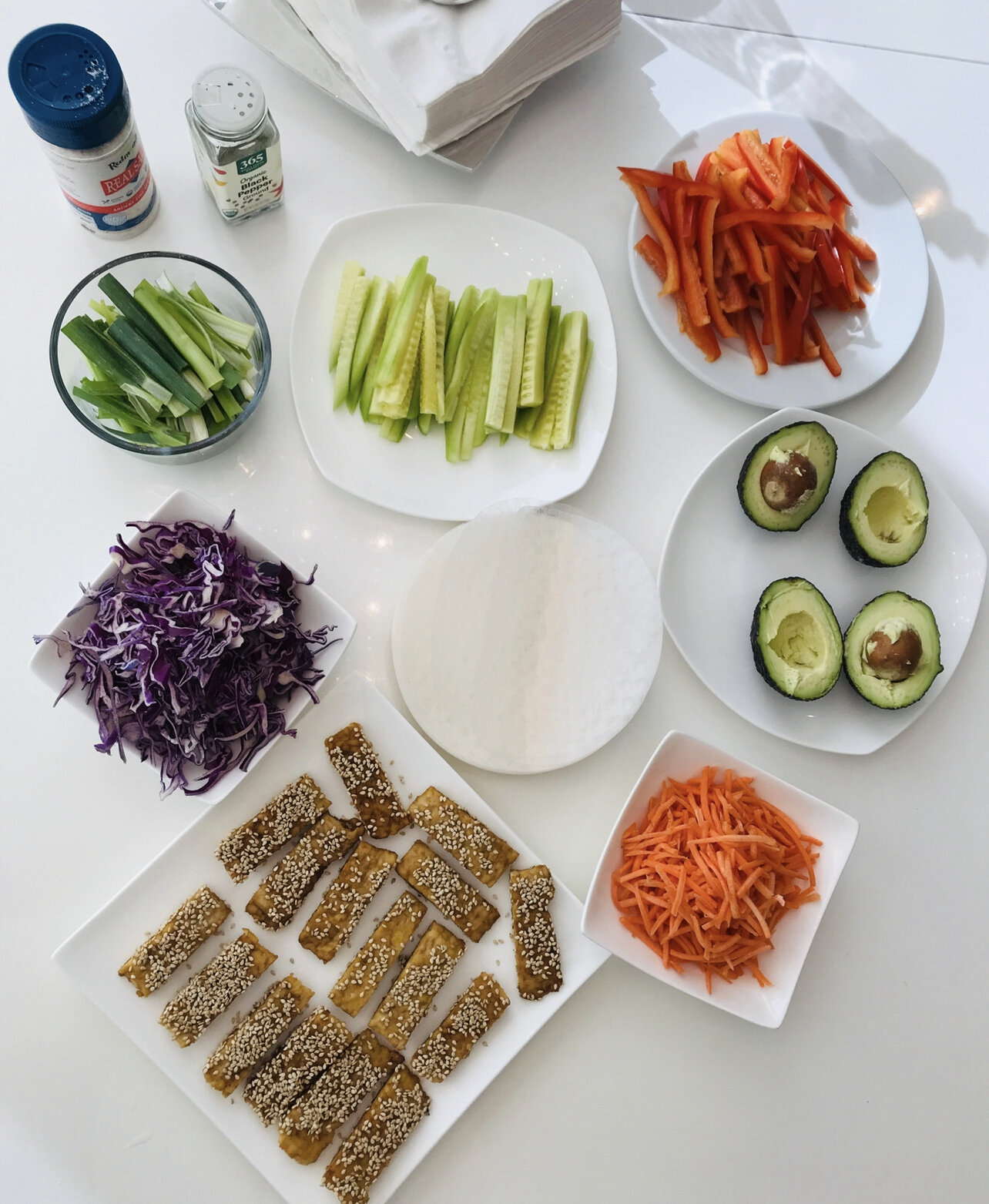Wrap and Roll
Plant-based, low-calorie Asian Summer Rolls are a major crowd pleaser! These appetizers are perfect for an elegant dinner party, or anytime you want a healthy, vibrant, eye-catching starter.
Asian Summer Rolls for the Win
Summer rolls are my go-to, dinner party staple. While they take a little time and prep beforehand, the result is nothing short of beautiful, thanks to the colorful array of fresh veggies. And the taste? Out of this world! My summer rolls feature delicious strips of sautéed tempeh in a mouthwatering sauce of tamari, rice vinegar, and a touch of maple syrup for sweetness.
All wrapped up in a transparent roll, the freshness of the vegetables shines through. It’s truly an eat-the-rainbow recipe, which is always good in my book! For the very best flavor and quality, try checking out your local farmer’s market and look for organic and heirloom veggies!
What Are Summer Rolls?
These rolls start with a delicate rice paper wrap. The rice paper is almost completely transparent when prepared, so you can see the pretty fillings inside. Summer rolls can be sweet or savory; in this case, we’re going savory.
What You’ll Need
Summer rolls are truly customizable! If there’s anything in my ingredient list that you don’t want to use, no problem! If you have other ingredients you want to add, go for it!
Rice Wraps: I like to use Star Anise Foods rice wrappers. They’re available in brown rice and white rice versions, and have just a few simple ingredients.
Fresh Veggies: For this recipe, I used spinach, cucumber, red cabbage, scallion, shredded carrot, red bell pepper, avocado, and broccoli sprouts.
Tempeh: Like tofu, tempeh is made from fermented soybeans, but it has a heartier texture and flavor. Tempeh does not need to be drained or pressed before using; just slice and cook.
Tamari: This gluten-free cousin of soy sauce has a slightly richer flavor.
Rice Vinegar: Made from delicate rice wine, rice vinegar has a milder flavor than conventional white vinegar, and goes wonderfully in this dish.
Maple Syrup: Pure maple syrup brings a hint of sweetness to the dish, rounding out the flavor profile.
How to Make Asian Summer Rolls
It can be a little tricky getting the hang of working with rice paper wrappers! The trick is to get them out of the water just before they get too soft. If your first roll or two turns out a little messy, take my advice: eat them! It’s a delicious learning curve, right?
How to cook the tempeh
Make the Marinade. In a shallow dish, combine tamari sauce, rice vinegar, and maple syrup to taste.
Marinate the Tempeh. Cut your tempeh into half-inch strips and submerge in the marinade. (You can also put the marinade and tempeh in a zip-top bag and squish it around to mix.) Marinate in the refrigerator for at least 30 minutes.
Saute the Tempeh. Saute your tempeh over medium to medium-high heat for about 5 minutes, or until the strips are caramelized. Cool to room temperature before wrapping.
How to assemble the spring rolls
Cut all Veggies. All of the veggies should be cut into very thin strips, except the broccoli sprouts and scallions. Slice the scallions finely.
Dampen the Rice Paper Wrappers. Gently lay one rice paper wrapper at a time in a large bowl of room-temperature water. Wait 10-20 seconds, until it begins to soften, and then quickly remove it from the water and lay on a work surface.
Layer the Left Side of the Wrap. Place spinach, along with one or two thin slices of cucumber, red cabbage, and bell pepper on the left side of the wrap. Add scallions, broccoli sprouts, tempeh, and avocado.
Roll! Roll up your spring roll somewhat like a burrito: fold one side over, followed by the top and bottom, and then finish by wrapping the last side around. This can take a few tries to do neatly.
Enjoy!
You can serve these delicious rolls with soy sauce, or make a second batch of the tamari, rice vinegar, and maple syrup mixture for dipping. Feel free to add sriracha or crushed red pepper for an extra kick!
Disclaimer: This content is provided for general informational purposes only, and is not intended nor should be considered a substitute to professional medical advice, diagnosis, or treatment by your healthcare provider.




